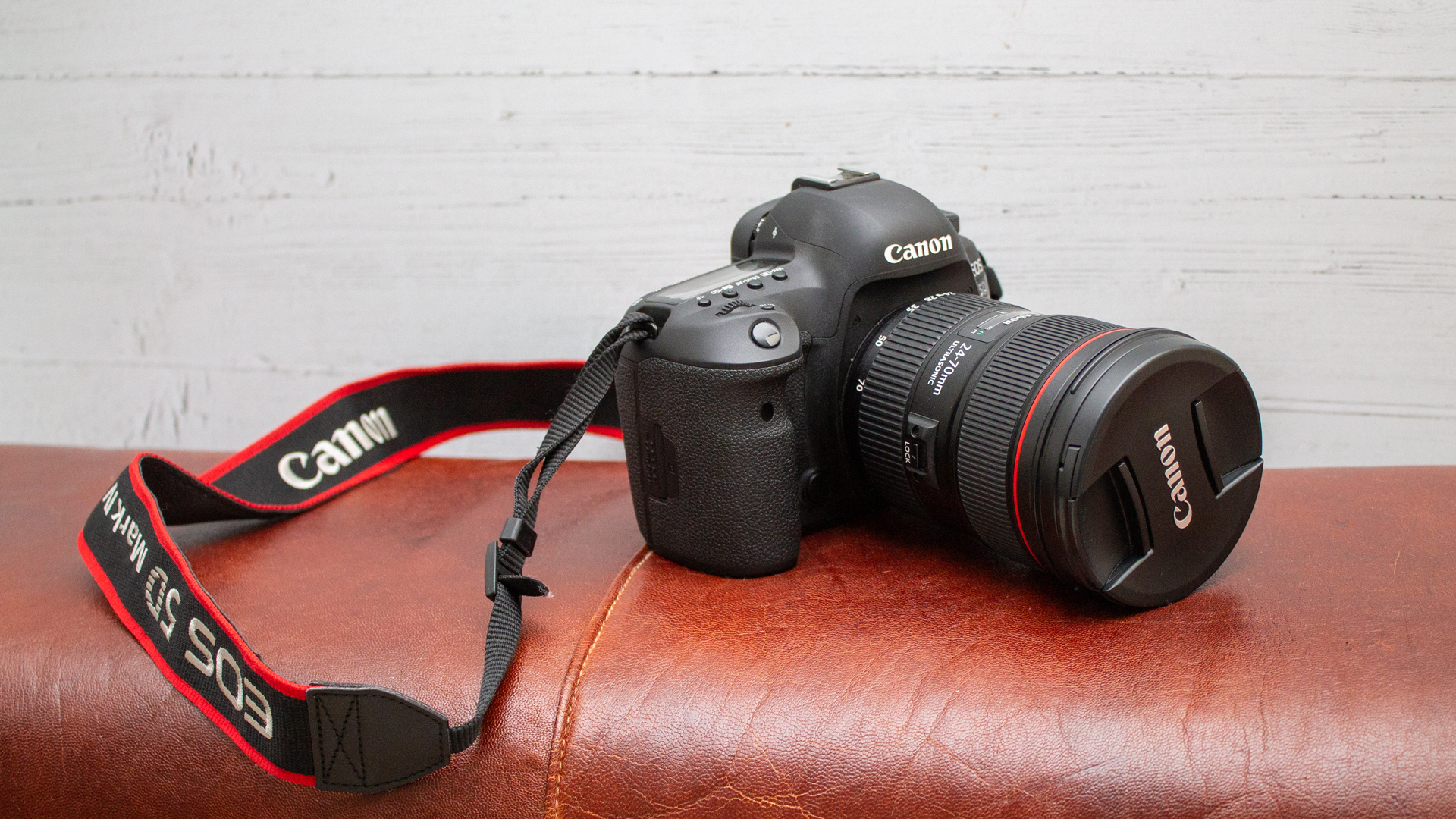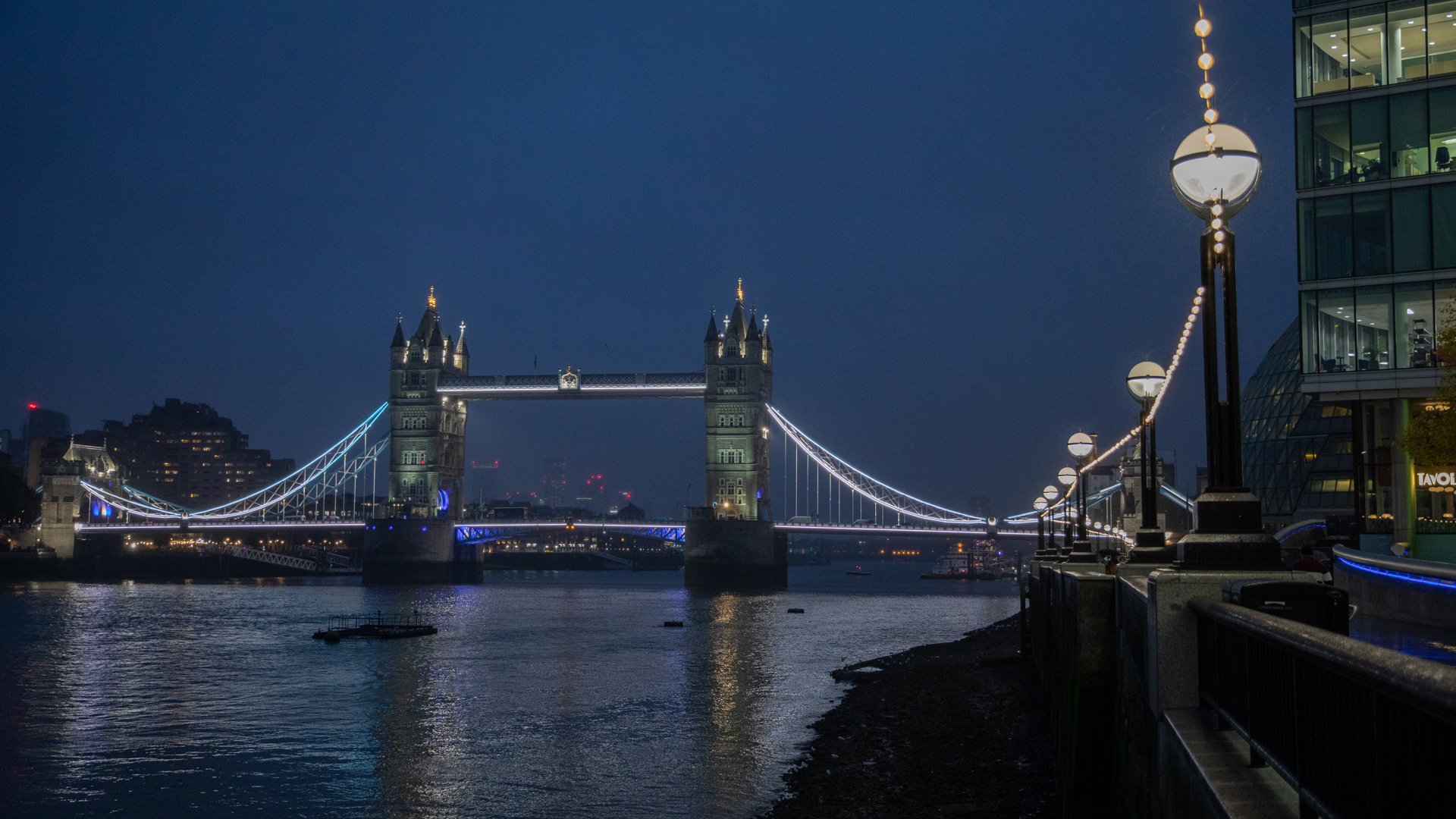Space Verdict
The Canon 5D Mark IV is an excellent upgrade on its predecessor thanks to its new autofocus system and sensor, wider ISO range, touch screen control and built-in Wi-Fi.
Pros
- +
3.2inch touchscreen – the first in the 5D series
- +
High ISO performance
- +
Cinema 4K video at up to 30fps
- +
In-built Wi-Fi
- +
Wider ISO range
Cons
- -
4K video files are quite large and 4K videos have a 1.64x crop factor
- -
Unable to send 4K video to an external recorder via the HDMI port, only HD
- -
New Dual Pixel Raw shooting format isn’t as great as its hyped up to be
- -
No tilting screen
Why you can trust Space.com
For Canon shooters with older 5D models, the Canon 5D Mark IV is a pleasant upgrade, with its improved AF system, slightly wider ISO range and faster capture rate – and that’s why we rate it as one of the best DSLR cameras. It’s particularly excellent in low light conditions, which makes it useful for astrophotographers, and the new Wi-Fi capability allows it to seamlessly transfer images and shoot remotely.
Type: DSLR
Sensor: 36 x 24 mm CMOS
Megapixels: 30.4
Lens mount: EF
Screen: 8.1 cm LCD touchscreen
Continuous shooting speed: 7fps
Viewfinder: Pentaprism
Max video resolution: 4K
User level: Enthusiast/professional
Pushing out more megapixels in each image, the quality is improved and video resolution even reaches 4K. For photographers looking to add a bit of good looking 4K video footage to their output, the Canon 5D Mark IV delivers – but pure videographers, on the other hand, may find it a mixed bag as the fize sizes are ridiculously large and you can’t send 4K video via the HDMI.
Enthusiasts will be impressed by the “pro” body and features, making it a great introduction to full frame photography, though the Sony a99 II could be a good (and more wallet friendly) contender. But professionals and 5D users will find it a great bit of kit to add to their arsenal – the Canon 5D IV is often referred to as a “workhorse” thanks to its sturdy build and its versatility (to be used for lots of different purposes).
It doesn't quite make our list of the best cameras for astrophotography, but it's still a damn good body, and one of the best cameras for all round photos you can buy.
Canon 5D Mark IV: Design
- First Canon 5D body to have a full touchscreen interface
- Modest weather sealing
- New AF area selection push button

Unlike its predecessors, the 5D Mark IV is blessed with a full touchscreen interface – the 8.1 cm LCD touchscreen (similar to the 1D Mark II) is brilliantly responsive and sensitive. The touchscreen is particularly useful when it comes to playback – you can pinch with your fingers to zoom to check your photos are in focus. The handgrip and thumb rest on the Canon 5D Mark IV body have been designed to be deeper than the EOS 5D Mark III, but in reality the difference is hardly noticeable. The weather sealing has been enhanced slightly though it lacks the comprehensive weather sealing of the 1D X Mark II.
Kit lens: None
Best wide lens: Canon EF 16-35mm f/2.8L III USM
Best zoom lens: Canon EF 24-70mm f/2.8L II USM
Spare battery type: Canon LP-E6 rechargeable Li-ion Battery
Memory card: 2 slots: UDMA 7 Compact flash memory card and SD card slot
When it comes to the button layout, it’s very similar to the Mark III, the only key differences being that the AF joystick has a textured finish (very similar to the EOS-1D X Mark II), and there’s a new push button on the back of the body – designed by default to control the autofocus area and switch autofocus points when the camera is still held to your eye – but this can be customised to your preferences. On that note, if you are one of those people who likes your custom function buttons, you have the ability to customise 10 of them.
The 50g weight saving on the 5D Mark IV isn’t exactly obvious when comparing it to the 5D Mark III, and it’s a big and relatively heavy piece of tech for those with smaller hands. What may annoy those who already have the 5D Mark III is that the BG-11 battery grip isn’t compatible with the Mark IV, which only supports the BG-E20. The twin card slots (CF and SD) are handy for those who want a real time backup (or extra storage). The 'rate' button is good to know about too – you can use it to rate an image during playback. These ratings are brought over into software, like Adobe Bridge, so you can quickly whittle down your images for processing. As with the rest of the 5D series, you won’t be surprised to know that this model has no in-built flash.
Breaking space news, the latest updates on rocket launches, skywatching events and more!
Canon 5D Mark IV: Functionality
- New 61-point AF system
- Wi-Fi connectivity and GPS
- New Dual Pixel Raw shooting format

The Canon 5D Mark IV boasts enhanced autofocus performance thanks to its new 61-point AF system (taken from the Canon EOS 1D X Mark II). The points in the autofocus system cover a larger area of the frame than the Canon 5D Mark II. Couple this with the new AF area push button and the process of acquiring focus is made easier and faster. The AF system has more customisation options than the Nikon D810, for example, but doesn’t beat the 151-point AF system in the Nikon D5 or D500. Still, switching between focus modes is quick and simple, even for a novice. The multidirectional joystick remains brilliant for controlling focus points, particularly when reframing a shot.
If the idea of the new Dual Pixel Raw shooting format impresses you, don’t let it be the sole reason you upgrade. Described as a "unique post-shooting treatment" that lets you maximise sharpness and bokeh shift, it lets you take a more detailed RAW file so you have a bit more to work with in post processing. But unfortunately the amount of change seen when experimenting is minor; it doesn’t warrant the pain of dealing with doubled file sizes or downloading Canon’s somewhat clunky digital processing software.
The addition of Wi-Fi to the 5D models is a gamechanger for transferring images seamlessly to a smartphone and tablet. It means the Canon 5D Mark IV connects quickly to the Canon Camera Connect app, making remote live shooting a possibility (great for self portraits!). The app gives you the ability to remotely control the camera – you can adjust things like the aperture, ISO and focus point. But do note not to leave the camera with the Wi-Fi switched on when you’re not using it to maximise your battery life. The body also has a USB 3.0 connection so the camera can undertake quick file transfers without needing a card reader.
Landscape photographers, in particular, will want to take advantage of the new GPS feature, which lets them know exactly where they captured a particular shot.
Canon 5D Mark IV: Performance
- New 30.4-million-pixel sensor
- Excellent performance in low light
- Upgraded metering system

The 8-megapixel increase in resolution of the Canon 5D Mark IV over its predecessor produces sharp levels of detail and well saturated images. The gigantic RAW image files preserve so much detail that can be manipulated in post processing – perfect for pro togs. The sensor also performs well at high ISO, making it better than the Mark III when shooting in low light conditions and bringing detail back to shadowed areas in an image. This also means the camera can shoot faster than its predecessor, although only by 1fps. Combine this with its new AF system and the faster performance is well noticeable in live view. The live view focus system is excellent in low light settings – touch the screen to focus where you want and it’ll take the shot. Silent continuous shooting remains at 3fps, as it was on the Mark IV. The Canon 5D Mark IV also comes with the metering system of Canon EOS 5DS models.
The 4K video functionality may tempt filmmakers – though the lack of tilting screen (like on the 80D) may not. What’s more, the 1.74 crop factor and the absence of 4K HDMI output may also be off putting. But, on the plus side, the 4K movie quality offers lots more detail than HD and it is possible to extract 8 megapixel JPEGs directly from the footage.

In a studio environment the Canon 5D Mark IV is a superstar – pumping out brilliant quality images with no noise and great color. When out and about, the Canon 5D Mark IV does not have an in-built image stabilization feature – so there’s a possibility that handheld shots at a low shutter speed will be shaky unless you’re using a lens with image stabilization built in. Bear in mind that you should get the fastest memory cards available in order to get the most from this camera. In terms of noise, when shooting between ISO 100 and 800, the results are mostly clean and free of noise. Get closer to ISO 1600 and there’s definitive noise visible. Still, when shooting in low light the improved dynamic range in the Canon 5D IV helps bring back shadows, and even out the contrast, though the low light performance is still not as good as other models like the Nikon D850 and the Sony a7R III.
Should you buy the Canon 5D Mark IV?
While it may leave a dent in the wallet, the Canon 5D Mark IV – with its addition of Wi-Fi, GPS and touchscreen features – is ideal for enthusiasts and pro photographers seeking an all-rounder that handles well. Wedding, fashion and family photographers are well catered for, as are those that shoot a little of everything, and often. The one thing it’s missing is a vari-angle/tilting screen. This is not a camera for videographers – it doesn’t offer the flexibility or file sizes that would make their jobs easier.

If this product isn't for you…
Beginners may be better off starting with an entry level DSLR like the Nikon D3500, with its more basic level interface and wallet friendly price. For pro togs looking for a model that beats the Canon 5D Mark IV, the Canon EOS R5 – a 45-megapixel full-frame mirrorless camera – could be a great option. It fuses the form of the EOS Rs, the function of the EOS 5Ds, and the pro-level autofocus built into the Canon EOS-1D X. Enthusiast and pro videographers might be drawn to the Sony A7S III – one of the few cameras that can shoot 4K at full frame with no crop. And photographers who purely capture action like sport might be better off with the Canon 7D Mk II or 1DX Mk II.

Kavi Shah is an experienced freelance writer and editor who covers various topics for Top Ten Reviews, including photography, education and languages. She has also written for The Telegraph, Time Out London, londonist.com, and more. She has partnered with brands and PRs for various events and trips, and has written commercial content for brands including Virgin and Tesco.

